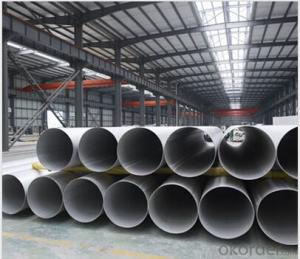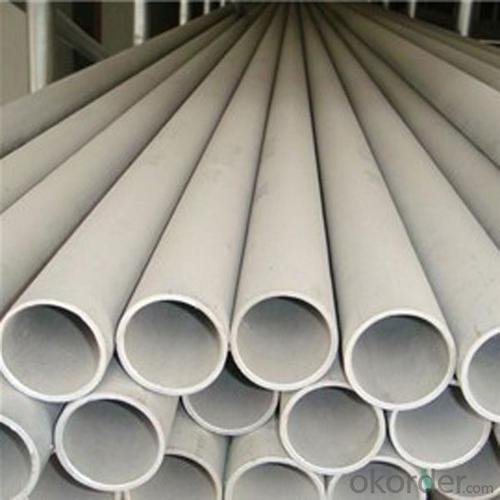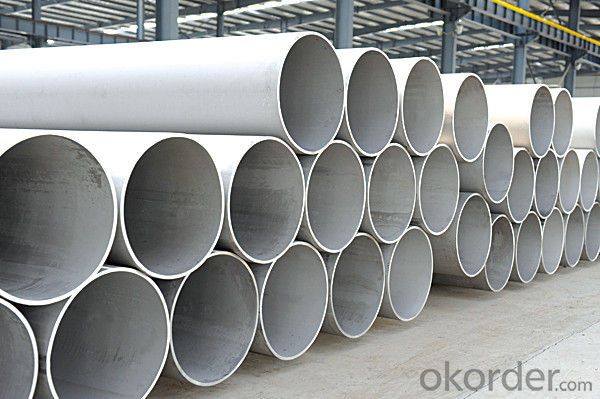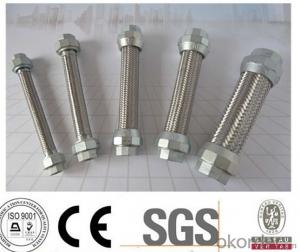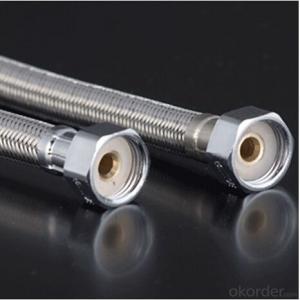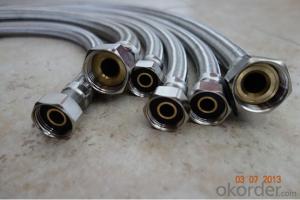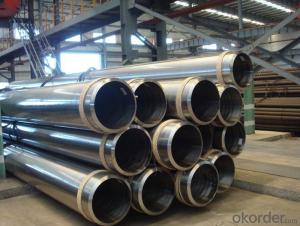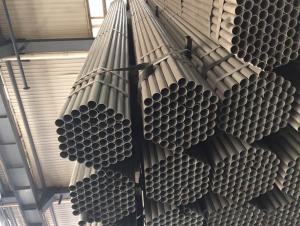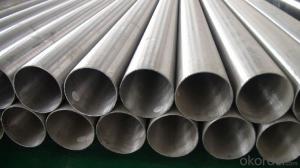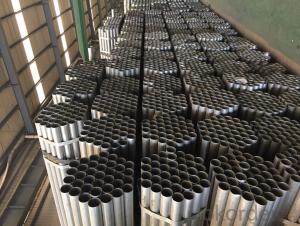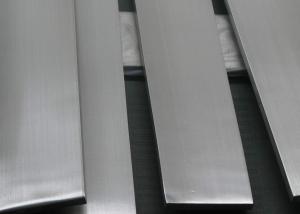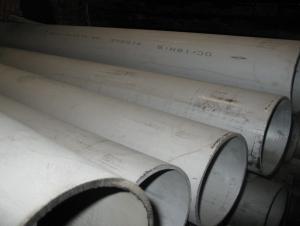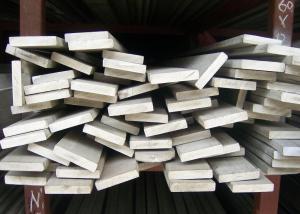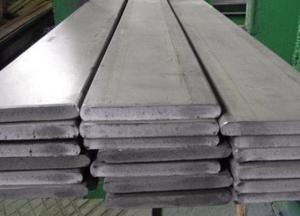Stainless Steel Welded Pipe ASTM A358/A312/A778
- Loading Port:
- Ningbo
- Payment Terms:
- TT or LC
- Min Order Qty:
- 25 m.t.
- Supply Capability:
- 8000 m.t./month
OKorder Service Pledge
OKorder Financial Service
You Might Also Like
1、Structure of Stainless Steel Welded Pipe ASTM A358/A312/A778 Description:
Stainless steel welded pipe is actually a cover term, covering a wide range of alloy and making them suitable for different attributes that are used in a very wide and large numbers of different industries. Stainless steel pipe is resistant to erosion, highly flexible, powerful, easy to use, and can be done in distinct approaches, which means that more and more stainless steel was used as a construction material for large-scale, high impact buildings. It can be molded, rolling, and it can create amazing shapes to make it perfect, It is used as experimental buildings, The use of steel pipe welding of large stainless steel covers other examples.
2、Main Features of the Stainless Steel Welded Pipe ASTM A358/A312/A778:
• High manufacturing accuracy
• High strength
• Small inertia resistance
• Strong heat dissipation ability
• Good visual effect
•Reasonable price
3、Stainless Steel Welded Pipe ASTM A358/A312/A778 Images:
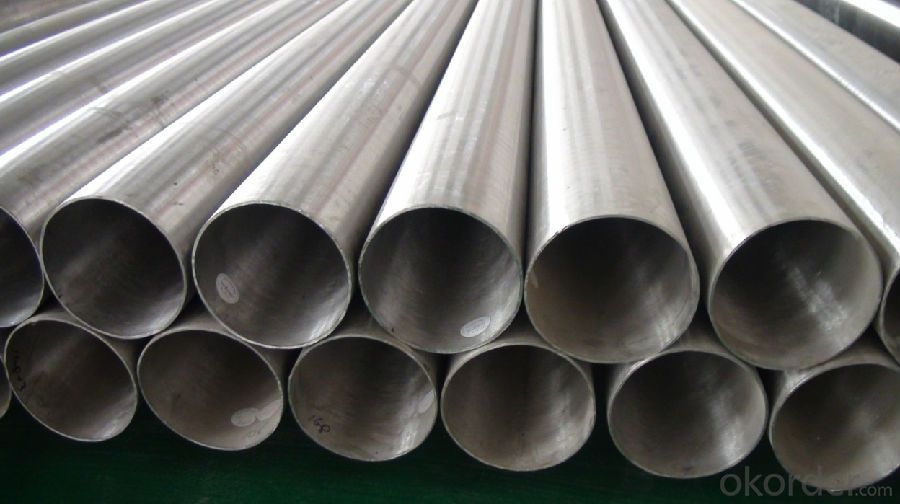
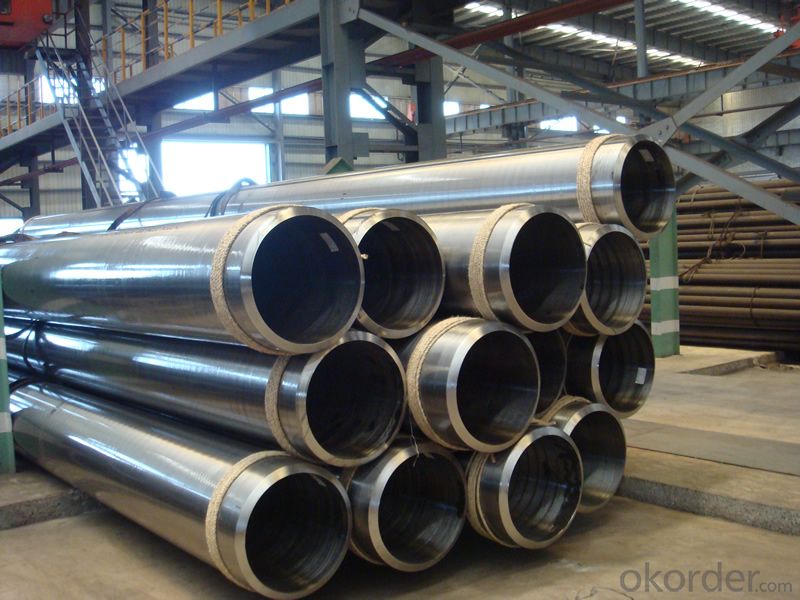
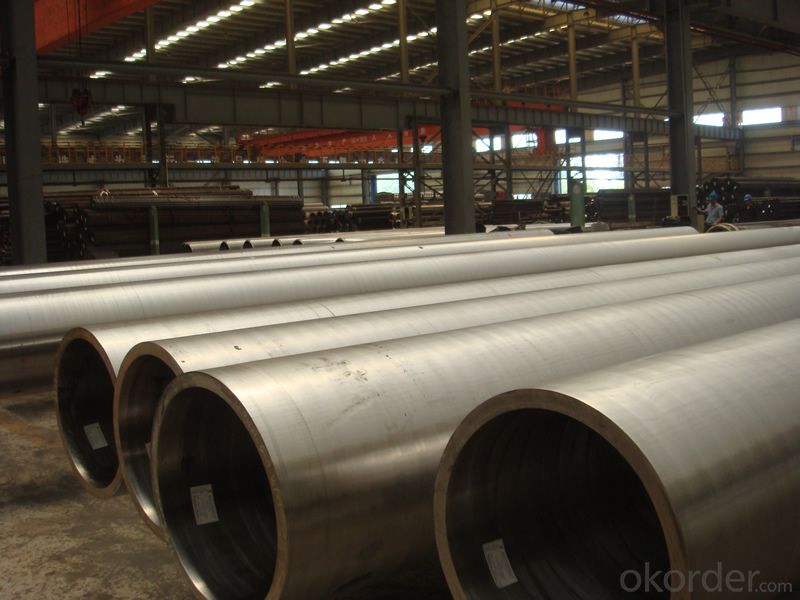
4、Stainless Steel Welded Pipe ASTM A358/A312/A778 Specification:
Size:
| Outside diameter | Outside | Thickness | ||||
| SCH 5S | SCH 10S | SCH 20S | SCH 40S | |||
| (A) | (B) | mm | mm | mm | mm | mm |
| 350 | 14′ | 355.6 | 3.96 | 4.78 | 7.92 | 11.13 |
| 400 | 16′ | 406.4 | 4.19 | 4.78 | 7.92 | 12.7 |
| 450 | 18′ | 457.2 | 4.19 | 4.78 | 7.92 | 14.27 |
| 500 | 20′ | 508.0 | 4.78 | 5.54 | 9.53 | 15.09 |
| 550 | 22′ | 558.8 | 4.78 | 5.54 | 9.53 | 15.09 |
| 600 | 24′ | 609.6 | 5.54 | 6.35 | 9.53 | 17.48 |
| 650 | 26′ | 660.4 | 5.54 | 7.92 | 12.7 | 17.48 |
| 700 | 28′ | 711.2 | 5.54 | 7.92 | 12.7 | 17.48 |
| 750 | 30′ | 762.0 | 6.35 | 7.92 | 12.7 | 17.48 |
| 800 | 32′ | 812.8 | 7.90 | 12.7 | 17.48 | |
| 850 | 34 | 863.6 | 7.92 | 12.7 | 17.48 | |
| 900 | 36′ | 914.4 | 7.92 | 12.7 | 19.05 | |
| 1000 | 40′ | 1016.0 | 9.53 | |||
Tolerances on dimensions table:
| Standard | Outside(mm) | Thickness(mm) | Length(mm) | |
| ASTM A312 | ≤48.26 | +0.40 -0.80 | +No special provisions(Unspecified)-12.50% | Appoint LengthDefinite cut length+6.40 -0 |
| >48.26~114.30 | +0.80 -0.80 | |||
| >114.30~219.08 | +1.60 -0.80 | |||
| >219.08~457.20 | +2.40 -0.80 | |||
| >457~660 | +3.20/-0.80 | |||
| >660~864 | +4.00/-0.80 | |||
| >864~1219 | +4.48/-0.80 | |||
| JIS G3459 | <30.00 ±0.30≥30.00 ±1.00% | <2.00 ±0.20≥2.00 ±10% | Appoint LengthDefinite cut Length | |
| GB/T 12771 | <13.00 ±0.2013.00~40.00 ±0.30≥40.00 ±0.80% | ≤4.00 +0.50 -0.60>4.00 ±10% | +20.00-0 | |
| EN 10217-7 | D1±1.50% with±0.75mm(min)D2±1.00% with±0.50mm(min)D3±0.75% with±0.30mm(min) D4±0.5% with±0.10mm(min) | T1±15.00% with±0.60mm(min)T2±12.5% with±0.40mm(min)T3±10.00% with±0.20mm(min) T4±7.50% with±0.15mm(min) T5±5.00% with±0.10mm(min) EN ISO 1127 | ≤6000 +5.00 -06000~12000 +10.00 -0 | |
5、FAQ of Stainless Steel Welded Pipe ASTM A358/A312/A778:
①How is the quality of your products?
Our products are manufactured strictly according to national and internaional standard, and we take a test on every pipe before delivered out. If you want see our quality certifications and all kinds of testing report, please just ask us for it.
Guaranteed: If products’ quality don’t accord to discription as we give or the promise before you place order, we promise 100% refund.
②How about price?
Yes, we are factory and be able to give you lowest price below market one, and we have a policy that “ for saving time and absolutely honest business attitude, we quote as lowest as possible for any customer, and discount can be given according to quantity”,if you like bargain and factory price is not low enough as you think, just don’t waste your time.Please trust the quotation we would give you, it is professional one.
③Why should you chose us?
Chose happens because of quality, then price, We can give you both.Additionally, we can also offer professional products inquiry, products knowledge train(for agents), smooth goods delivery, exellent customer solution proposals.Our service formula: good quality+good price+good service=customer’s trust
SGS test is available, customer inspection before shipping is welcome, third party inspection is no problem.
Any question, pls feel free to contact us !
- Q: How do you calculate the bending radius of stainless steel pipes?
- To calculate the bending radius of stainless steel pipes, you need to consider several factors. The bending radius is determined by the diameter of the pipe, the wall thickness, and the type of stainless steel being used. First, you need to determine the outside diameter (OD) of the pipe. This can be measured directly or obtained from the pipe specifications. Next, you should identify the wall thickness of the pipe. This information is available in the pipe specifications or can be measured using a caliper. Once you have the OD and wall thickness, you can calculate the inside diameter (ID) of the pipe by subtracting twice the wall thickness from the OD. This is because the wall thickness is evenly distributed on both sides of the pipe. Now that you have the ID, you can calculate the bending radius. The bending radius is typically expressed as a multiple of the pipe's OD. The general rule is that the bending radius should be at least three times the OD for stainless steel pipes. However, this value may vary depending on the specific application and the type of stainless steel being used. It is important to note that bending stainless steel pipes beyond their recommended bending radius can lead to deformation, cracking, or failure. Therefore, it is crucial to follow the manufacturer's guidelines and consult with an engineer or a professional experienced in working with stainless steel pipes for accurate calculations.
- Q: Can stainless steel pipes be used for seawater applications?
- Yes, stainless steel pipes can be used for seawater applications. Stainless steel is highly resistant to corrosion and can withstand the harsh conditions of seawater, making it an ideal material for pipes used in marine environments. The chromium content in stainless steel forms a protective oxide layer on the surface of the pipes, preventing corrosion and ensuring durability. Additionally, stainless steel pipes have good strength and can handle high-pressure situations, making them suitable for various seawater applications such as desalination plants, offshore oil rigs, and shipbuilding.
- Q: Can stainless steel pipes be used for structural purposes?
- Yes, stainless steel pipes can be used for structural purposes. Stainless steel is known for its strength, durability, and resistance to corrosion, making it an excellent material for structural applications. Stainless steel pipes are commonly used in various industries such as construction, architecture, and engineering for structural support, as well as for conveying fluids and gases. They can withstand heavy loads, extreme temperatures, and harsh environmental conditions, making them suitable for a wide range of structural applications. Additionally, stainless steel pipes are available in different grades, sizes, and thicknesses, allowing for customization to meet specific structural requirements.
- Q: What are the specifications of stainless steel decorative pipes?
- The steel pipe seamless steel pipe and welded steel pipe (seamed pipe) two categories. It can be divided into round tube and special-shaped tube according to the sectional shape. The round steel tube is widely used, but there are some special-shaped steel tubes such as square, rectangle, semicircle, hexagon, equilateral triangle and octagon.
- Q: Can stainless steel pipes be threaded with NPT threads?
- Indeed, NPT threads can be applied to stainless steel pipes. NPT, a prevalent standard for pipe threads in the United States, is compatible with stainless steel as well as various other materials. Nevertheless, it is crucial to acknowledge that stainless steel possesses greater strength and hardness compared to alternative materials, necessitating increased caution and attentiveness during the threading procedure. Moreover, employing lubricants or cutting fluids specifically formulated for stainless steel is advised to guarantee a seamless and precise threading operation.
- Q: How do stainless steel pipes compare to polyvinyl chloride pipes?
- Two popular options for plumbing and industrial applications are stainless steel pipes and polyvinyl chloride (PVC) pipes. These pipes have distinct characteristics and advantages, making them suitable for different purposes. To begin with, stainless steel pipes are renowned for their exceptional durability and strength. They can withstand corrosion, rust, and extreme temperatures, making them ideal for harsh environments and outdoor use. Furthermore, stainless steel pipes have a long lifespan and require minimal maintenance, reducing replacement and repair costs over time. On the other hand, PVC pipes are lightweight and easy to install, making them a cost-effective choice for residential and commercial plumbing systems. They resist chemicals and provide good insulation. PVC pipes are also non-conductive, making them suitable for electrical applications. Additionally, PVC pipes are typically less expensive than stainless steel pipes, which is important for projects on a tight budget. Another important factor to consider is the environmental impact. Stainless steel pipes are fully recyclable, making them an environmentally friendly option. However, PVC pipes can raise environmental concerns due to the use of chlorine during production and the challenges of recycling. Ultimately, the decision between stainless steel pipes and PVC pipes depends on various factors, including the specific application, budget, durability requirements, and environmental considerations. While stainless steel pipes excel in terms of durability and resistance, PVC pipes are cost-effective and easy to install. It is crucial to assess the project's needs and consult professionals to determine the most suitable option for each case.
- Q: What is the difference between Schedule 10 and Schedule 40 stainless steel pipes?
- The main difference between Schedule 10 and Schedule 40 stainless steel pipes lies in their wall thicknesses and pressure ratings. Schedule 10 pipes have thinner walls compared to Schedule 40 pipes. This means that Schedule 10 pipes are suitable for applications that require lower pressure ratings and are generally used for lighter-duty purposes. On the other hand, Schedule 40 pipes have thicker walls, making them suitable for applications that require higher pressure ratings and are often used in heavy-duty or industrial settings. The choice between Schedule 10 and Schedule 40 stainless steel pipes depends on the specific requirements of the application, including the pressure, temperature, and material compatibility.
- Q: What is the maximum pressure rating for stainless steel pipes?
- The maximum pressure rating for stainless steel pipes can vary depending on factors such as the pipe size, wall thickness, and the specific grade of stainless steel used. However, stainless steel pipes are typically capable of handling high-pressure applications and can have maximum pressure ratings ranging from 1500 psi to 10,000 psi or more. It is important to refer to industry standards and consult with manufacturers to determine the exact maximum pressure rating for a specific stainless steel pipe.
- Q: How do stainless steel pipes perform in extreme weather conditions?
- Stainless steel pipes are known for their excellent performance and durability in extreme weather conditions. Due to their unique composition, stainless steel pipes have a high resistance to corrosion, making them ideal for use in various environments, including extreme weather conditions. In extremely cold weather, stainless steel pipes retain their strength and flexibility, unlike other materials that may become brittle or crack. This makes them suitable for applications such as oil and gas pipelines, where they can withstand low temperatures without compromising their performance. Similarly, in extremely hot weather, stainless steel pipes exhibit excellent heat resistance, preventing them from warping or deforming. This quality is crucial in industries like power generation, where high-temperature environments are common. Furthermore, stainless steel pipes have a high melting point, enabling them to maintain their structural integrity even in the presence of intense heat. This makes them resistant to fire damage, making them a safe choice for applications that require fire protection. Stainless steel pipes also have exceptional resistance to UV radiation, which can be damaging over time. This property ensures that the pipes do not degrade or weaken when exposed to direct sunlight or extreme weather conditions, making them suitable for outdoor applications. Additionally, stainless steel pipes have excellent mechanical properties, including high tensile strength and impact resistance. These qualities allow them to withstand extreme weather conditions such as high winds, heavy storms, and seismic activities without undergoing structural failures. In conclusion, stainless steel pipes are highly reliable and perform exceptionally well in extreme weather conditions. Their resistance to corrosion, high and low temperatures, UV radiation, and mechanical stress makes them a preferred choice for various industries, ensuring reliable and long-lasting performance even in the harshest environments.
- Q: What is the external coating used for stainless steel pipes?
- The external coating used for stainless steel pipes can vary, but common options include epoxy, polyethylene, or polypropylene coatings.
Send your message to us
Stainless Steel Welded Pipe ASTM A358/A312/A778
- Loading Port:
- Ningbo
- Payment Terms:
- TT or LC
- Min Order Qty:
- 25 m.t.
- Supply Capability:
- 8000 m.t./month
OKorder Service Pledge
OKorder Financial Service
Similar products
Hot products
Hot Searches
Related keywords

